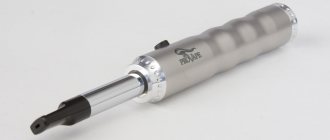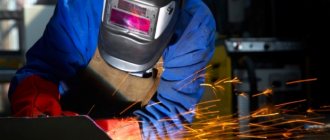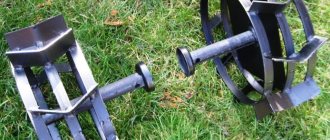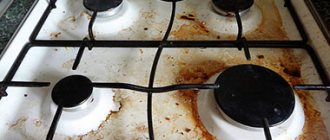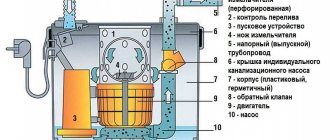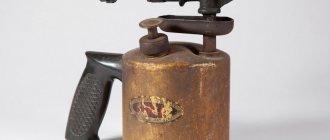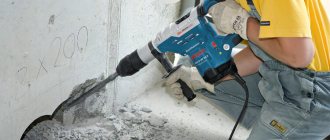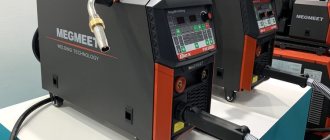To remove rust, as well as to remove paint from metal surfaces or walls, as a rule, you have to put in a lot of effort and spend a lot of time. Therefore, in the modern world, this process cannot be done without the use of special power tools. A grinder (also known as an angle grinder or angle grinder) equipped with special attachments will help make this type of work easier. Typically, for such operations, specialized disks are used for stripping or roughening, however, the final stages of processing can be carried out using grinding and sharpening devices - everything will depend on the material that was to be processed.
Cleaning and grinding discs
Their working part is a steel cup or some kind of combination of two disks, on the edge of which brushes, twisted rollers or standard metal wire are integrated. This design is suitable for removing traces of corrosion and rust, as well as layers of various coatings (for example, dried cement, polymer or paint coating). These devices will become indispensable when repairing bodies of various car models, equipment or construction units. The strength and cross-section of the wire element will determine the level of processing. The coating of grinding discs can be abrasive or diamond, and their edges are similar to the edges of grinding wheels. Therefore, they can easily remove plaster and other coatings applied to stone or concrete with a high level of finishing adhesion.
Paint remover attachments
It is preferable to remove paint using brush disks - they delicately clean the surface, pass over uneven surfaces better, and also cause almost no harm at the junction or adhesion of the objects being treated. Wire brushes are considered a little more aggressive - they are better for removing paint applied to hard surfaces, because they have little elasticity and do not interact well with uneven surfaces. To effectively remove paintwork, these attachments will require the tool to operate at high speeds and it is desirable that the tool itself, in order to be more stable, should not be very light. At the same time, high speeds and the heaviness of the tool will adversely affect the operator (hand fatigue will occur faster).
Attachments for removing coatings from metal surfaces
For roughing work on metal surfaces (usually removing rust and traces of corrosion), specialists use brushes. They look like a classic brush made of twisted/untwisted wire installed in a metal glass or integrated into a disk based on a similar wire.
IMPORTANT! When working with metal brushes, you should only wear special protective clothing, because during processing, small pieces of wire can break off from the nozzle and fly towards the operator.
Depending on the type of roughing work being carried out, the hardness and thickness of the brushes should be properly selected. It is always necessary to remember that the wire installed on the disk leaves scratches on the surface to be processed. Therefore, to remove coatings from, for example, a car body, they must be used with caution. But when removing rust in hard-to-reach and invisible places, they can be used with force. For gentle stripping of metal, it is preferable to use special wheels based on silicone carbide fibers (XCS) - they are standard black. Also, for gentle work, wear-resistant discs made using the “Wedge and Strip” technology (made of nylon threads and blue in color) are suitable. These wheels are manufactured in two versions - for angle grinders and for drills. Their distinctive feature is that after work the circle is not clogged with the material being removed and does not cause damage to the treated surface in the form of scratches. At the same time, it will perfectly remove welding spatter, traces of rust, frozen drops of sealant and anti-corrosion coating. Due to their high wear resistance, Wedge & Strip wheels can be used until they are completely worn out.
To remove paintwork from metal surfaces, you can also use a flap attachment for an angle grinder. The petal disk is a circle with sandpaper glued to its surface, which is cut out in the form of petals. For roughing purposes, sandpaper with a large grain size is used. For final (finishing) work, sandpaper flaps with a fine grain size are selected. However, such wheels tend to wear out quickly, and their surface quickly becomes clogged with remnants of the removed paintwork, but replacing or restoring them is very simple.
Nozzles for removing coatings from walls
In order to carefully remove the paintwork from the walls, you should use brushes on thick twisted wire. This method is the most effective, but it creates a lot of dust. From this it is clear that during the work the operator must use safety glasses and a respirator. In addition, it is preferable to equip an angle grinder with a special vacuum cleaner with equipment that would cover the brushes. Also, thick twisted wire will do an excellent job of removing old primer, plaster or putty from walls.
Bowl-shaped attachments are used to remove paint from concrete walls. During this process, the grinder must be held at an angle so that the tool does not penetrate into the surface, but the paint layer is still removed. At the same time, using a thick Witt brush it is possible to carry out final work on leveling the surface and removing any sagging on the wall.
Removing thick layers of paintwork
An indispensable tool when working on surfaces with large damage (for example, after straightening), as well as on surfaces that have previously been repaired and have thick layers of old repair materials on them, is an angle grinder, popularly called a “grinder”.
For example, a Rodcraft 7150 pneumatic grinder or an electric rotary sander Festool RAS 115.04 E.
Cleaning with Festool RAS 115.04 E
The most commonly used materials for this task are fiber discs: regular or with Velcro fastening. For Sia, these are siamet and siatop circles, respectively. These are very aggressive materials, so they can easily cope with the removal of thick layers of paintwork. However, these materials should be used carefully so as not to leave too rough marks on the metal surface. After working with coarse wheels, be sure to grind the surface with finer abrasive materials, taking into account the grinding steps (the difference in grain should be no more than 100 units).
siamet fiber cleaning wheel
Velcro stripping fiber discs siatop
The recommended speed for working with siamet wheels is 10,000 rpm. For siatop discs, the speed should be limited to 8000 rpm, as at higher speeds the Velcro on the edges of the discs may burn.
Wiping wheel based on synthetic fibers SCM
Special cleaning wheels based on synthetic SCM fibers also do an excellent job of removing thick layers of paintwork materials. Due to their structure, these wheels are almost not clogged with paint particles and leave virtually no marks on the metal, which makes it possible to avoid regrinding the surface with finer abrasives to avoid subsidence. As mentioned above, these circles are also great for eliminating small defects.
The grain size of these materials is indicated by the letter “K”. They have three gradations: K060 (coarse), K100 (medium) and K150 (fine). To attach these circles, the same plate is suitable as for fiber circles with Velcro. Operating speed - no more than 85000 rpm.
Very good for removing old paintwork and stripping flap discs. Sia has siaflap wheels. Due to the fan-shaped arrangement of the abrasive blades, such discs wear evenly and do not clog. They last 6 or more times longer than regular circles! Operating speed with 115 mm discs is up to 13,000 rpm.
siaflap cleaning flap disc
Grinding discs
Such discs are specifically designed for rough metal processing. They can be used to clean weld seams, chamfer cut iron objects, and also sharpen tools (chisels, drills, etc.) when there is no sharpening machine at hand.
IMPORTANT! To work on these disks, the angle grinder speed should be set to a minimum and should not exceed the recommended values indicated on the marking.
Typically, these circles are used on small models of grinders, because they are easier to clean metal. Grinding discs differ from cutting discs in their thickness (at least 5 millimeters) and they have a recess in the center, which makes it easier to process the desired object.
Grinding discs
They are used for polishing and grinding various surfaces such as plastic, wood or metal. In this process, a flap-type grinding wheel is most often used, onto which sandpaper in the form of petals is glued. However, for the purposes of grinding, and not stripping, the petals can not only be glued, but simply attached to simple Velcro. For polishing purposes, you can use special wheels that look like felt pads. Full fabric discs will also work.
Attachment functions: paint removal, sanding, cleaning and more
Drill attachments perform many functions. With their help, it is possible to remove scale from the surface. This procedure is called brushing. Therefore, nozzles are also often called brushes or brushes.
In addition, devices are used for:
- wood brushing;
- removing paint, primer, slag, tarnish, rust and cleaning products from other contaminants;
- polishing wooden and metal surfaces;
Brushes with shank. Photo by Lessmann
- polishing of metal, wood, glass, paint and varnish coatings;
- grout.
This list is incomplete and the list could go on for a long time. But it is worth noting that brushes are in demand in various areas of production activity. In some cases, there is a possibility that the contractor will not be able to find alternatives to cord brushes.
Selection of discs for specific jobs
To remove nicks, burrs and roughness from wood floors or ceilings in new buildings, grinding wheels marked P150 or 180 should be used - they are best suited for general tasks.
For final and wet processing you should use:
- Models marked P240 and 280 - they will easily achieve smoothness when removing varnish or paint. This is especially true for objects with which a person constantly comes into contact, for example, furniture in a bathhouse.
- Abrasives marked P400, 600 and 1000 will help create an almost mirror-like surface on plastic, ceramic or metal products. They will not leave any special scratches on car bumpers and headlights, and will perfectly process metal furniture elements and even dishes.
- Wheels marked P1200, 1500, 2000 and 2500 will add a matte finish to an already painted surface of a body, windshield or any mirror surface.
For stripping polishing you will need to use special wheels with special materials:
- Vulcanite - they are made on a rubber base, to which crystalline ingredients are added. They have increased heat capacity, so they are able to process metal perfectly. For example, they can be used to renew stainless steel items, plumbing fixtures or dishes.
- Felt - made of compacted fabric that actively fights against chips and cracks, deep abrasions and scratches on wood, plastic, metal or glass ceramics. Polishes are excellent for cleaning. They will easily help you get rid of wiper marks on the front window of your car. They are even used in aviation and railway transport.
- Foam rubber – made on the basis of polyurethane foam. The circles can be different in terms of their own hardness and are marked with colors - white, orange, blue and black. Perfect for removing scratches and chips on painted surfaces. They also work well against smudges - just apply a little paste to the foam and walk over the problem area.
- Wool - the basis for them is synthetic or sheep wool. Ideal for hard cleaning - they perfectly remove oxidation marks and scratches from painted surfaces. They are used in conjunction with abrasive paste, but require a slightly larger amount of it to be applied than foam rubber ones. Typically used for cleaning car bodies after painting, but can leave clouding and holograms.
- Fur - structurally consist of soft fibers, which become sharp during rotation. These wheels are suitable for final cleaning and add shine and gloss to the treated surface. The main and main competitor of foam discs in this direction;
- Felt - made from felted wool and are suitable for removing defects from metal objects, while simultaneously cleaning the surface and giving it a glossy finish. In addition to body work, they can be used in special professional areas - polishing surgical instruments, measuring instruments, mechanical engineering elements and precision parts of other mechanisms.
Types of cord brushes for metal and wood
Modifications of brushes for drills are very diverse. There are nozzles that differ in shape, size, material and type of pile. In addition to brushes for drills, attachments for grinders, as well as hand brushes, are also popular.
Forms
It is the configuration of the nozzle that is one of the main criteria for classifying brushes. There are several types of devices, but despite the variety available, all brushes are round in shape. Moreover, this statement also applies to attachments for the grinder. Only manual cord brushes have other configurations.
Radial
Radial brushes are flat brushes suitable for treating surfaces in hard-to-reach areas . Cord brushes of this shape are also used for working with round products . A drill with an attachment is placed, for example, in a pipe, and thus the internal surface is processed.
Radial brush for drill TM Praktika. Photo 220 volt
Cylindrical
Cylindrical brushes have a shape that is elongated in length and narrow in diameter. Such nozzles are used for processing surfaces in narrow places. Also, cord brushes of this type are designed to work with small and medium-sized areas.
Cylindrical brush for drill. Photo VseInstruments.ru
Disk
Disc nozzles are often called oval or circular. Cord brushes of this type are suitable for processing large surfaces in hard-to-reach places, welding seams and joints. Read more about them here.
Disc brush for drill with brass bristles. Photo Dremel
Cup
Cup-shaped brushes are used to remove various contaminants , to prepare the surface before applying varnish and/or paint, sanding, and are used when carrying out labor-intensive work with large areas of flat products.
Cup brush for drill TM DEXX. Photo InstrumLend.ru
Conical
Conical cord brushes are designed for cleaning surfaces in places where other types of attachments are difficult to reach. The unique configuration of the brushes allows you to perform complex tasks.
Pile material
The pile of drill bits is made from different materials. Each type of bristle is designed to perform specific tasks and work with specific products.
Steel, metal, iron
Metal wire brushes are the most common type of attachments. This type includes brushes with bristles made from:
- become;
- brass;
- other metals.
Flat brush for drill with metal twisted bristles. Photo Matrix
Nozzles with brass-plated steel bristles are in demand among performers .
Devices of this type are suitable for almost all functions , with the exception of wood processing.
Often, metal and steel brushes are divided into separate categories of consumables for power tools.
Nylon
Nylon bristles are soft and delicate , so these brushes do an excellent job of texturing, polishing, removing dirt, brushing wooden products, working with soft metals (copper, aluminum and others), and plastic. They should be used in cases where the aesthetic appearance of the surface is of great importance .
End brush with nylon bristles. Photo Dremel
Type of pile
The bristles of the brush can have different types and shapes, similar to the body of the device.
Harness
Such attachments are devices whose pile is twisted and twisted into strands. This shape ensures increased hardness of the working part of the cord brush.
Cup wire brush for drill. Photo Matrix
Corrugated
Corrugated fibers have parallel wavy curves . Such bristles have springy properties, which reduces vibration of the drill.
Soft cup brush for drill with bristles made of corrugated steel wire. Photo Practice
Dimensions: 26 mm, 50 mm. and others
There are a large number of modifications of cord brushes. Drill attachments are more compact in size compared to grinder brushes. Devices with a diameter of up to 100 mm. should be called standard. Manufacturers offer craftsmen nozzles with a diameter of 25; 50; 60; 75 mm. and others. Large brushes have a larger diameter.
Disc brush for drill with bristles made of twisted steel brass-plated wire, diameter 100 m. Trademark DEXX. Photo Instrumentomania
Brands: Dexter, Dremel and others
Disc brush for drill. Photo Anchor
Craftsmen have the opportunity to purchase cord brushes for drills of various brands and manufactured by Russian and foreign enterprises:
- Dexter;
- DEXX;
- Dremel
- HAMMER;
- FIT;
- Lesmann;
- Matrix;
- Practice;
- Anchor.
When choosing a cord brush, it is worth remembering that attachments from different manufacturers may have slight differences both from each other and from the standard.
Specifics of marking discs for angle grinders
Together with the barcode of the country of manufacture and the scope of application, the marking of discs for the grinder contains the following information:
- Characteristics of the working coating (diamond, abrasive, etc.);
- Dimensions – diameter of the outer edge, diameter/thickness of the nozzle hole (in millimeters), etc.;
- Angular velocity (maximum);
- Rotation speed (maximum);
- Working angle (permissible);
- A list of operations that are prohibited from being performed by this circle;
- Pictograms and icons indicating safety measures;
- Expiration date and release date.
IMPORTANT! In addition to the information available on the circle, when making a purchase, it is worth asking the seller about the compliance of the selected product with Russian standards, and also inquire about the production technology of the circle itself.
Additional accessories required for cleaning work
Any work on cleaning or abrading surfaces must be performed with the proper level of comfort for the sake of their quality. Therefore, it would not be superfluous to purchase additional equipment for the “grinder”:
- Construction vacuum cleaner or dust collector - they are designed to collect and accumulate work dust. After work, the filled container with waste can simply be thrown into the trash bin, and cleaning, as such, may not be required at all.
- Dust extraction pipe - often supplied with a sander (usually with expensive models). You can also purchase it separately to connect the tool to the vacuum cleaner hose, thereby saving yourself from getting dust on your clothes while working.
- Protective gaskets are an optional element, but desirable, because designed to protect the working sole of the grinder from premature abrasion.
- Velcro is replaceable - they are used alternately to secure various equipment elements to the platform of the working unit.
Types of brushes
Figure 2. Types of brushes
Brushes perform many tasks necessary for a large number of craftsmen. Such attachments are popular, so manufacturers are trying to produce a large number of varieties.
Before proceeding directly to the classification of brushes, it is necessary to determine which models are metal. Wire brushes can be made from a variety of steels and alloys, with brass being the most common.
In some sources you can find mention of certain “iron” brushes. This is a fundamentally wrong approach, which contradicts the very technology of manufacturing the part. Nothing is made from iron. The materials are alloys containing iron. In these alloys, the amount of carbon plays a key role. It is this that will influence whether the result is brittle cast iron or flexible steel.
Wire brushes are classified according to a number of key parameters, which are presented below.
Purpose
According to their purpose, all brushes can be divided into several large groups:
- for polishing;
- for grinding;
- for cleaning surfaces from various contaminants;
- for processing seams after welding.
Each group may have varieties responsible for completing a particular job. It is worth noting that a large number of brushes have several purposes and appear to be universal tools.
By material
Figure 3. Materials used
Drill brushes can be made of different materials. According to this criterion they are divided into:
- metal;
- polymer;
- felt;
- lamellar;
- foam rubber.
How rough the surface treatment will be depends on the material.
By design
Brushes can be of several types. Each type has its own characteristics that allow one or another to be carried out effectively. Let's look at the main types of brushes.
Cup
Figure 4. Cup attachment
Such brushes are also called hand brushes. Structurally, they represent a kind of container in which the wire is installed. This wire is considered the main working fluid of the nozzle. The length of the wire can be different and depends on the purpose of the specific nozzle. Instead of wire, nylon or polymer can be used.
A wire brush attachment on a drill is used for grinding flat steel parts. Nylon is suitable for wood processing. This type is often used to remove old paint from the surface and smooth out uneven surfaces on concrete.
Conical
Figure 5. Conical brush
The nozzle is an intermediate structure, similar to both a cup and a disk. Features of the part help to easily deal with rust, dirt, paint or burrs. Suitable for working in hard-to-reach places.
Harness
In them, the pile on the working body is twisted into dense strands. This gives the structure high hardness and rigidity. Wire brushes last a long time even under heavy and intense loads. And they are heavily loaded, since they are usually used to remove the most difficult contaminants. At the same time, the bristles do not become dull. Since sharpening occurs simultaneously during operation.
Disk
Figure 6. Wheel brush
Such attachments are called brush attachments. A common type of metal brushes. They are versatile and durable enough for any craftsman to be interested in them. They treat surfaces, effectively cleaning them from rust, old paint and other contaminants. Weld seams are easy to clean. The drill brush has a series of twisted steel threads that allow for intensive cleaning. The bristles are directed along the entire circumference from the center to the edges.
Most often, nozzles are used for processing large surfaces, as they have a large contact area. In addition to household needs, a brush for drilling is widely used in industrial production.
Corbrush
Standard attachments for simple cleaning, polishing and processing of metal parts. Will get rid of flux deposits.
Polymer-abrasive
A separate type of nozzle, which is designed to clean metal surfaces from varnish or rust. They have soft hairs that will help you get into the most difficult places. Due to the softness of the hairs, hard roughing is not usually used. The nozzle simply will not be able to apply the necessary force to the surface.
Separately, it is worth highlighting a number of varieties of brushes in shape, which can be found on sale and become a necessary tool for the master:
- Radial – flat design for working in pipes.
- Cylindrical. Useful for cleaning pipes and also used in polishing jewelry.
- Plate. The shape of the plate allows for high-quality cleaning of the surfaces of various parts. The working fluid in this case is considered to be glued sandpaper.
- Petal. Hairs are attached to the cylinder, which will clean the surfaces. Suitable for any job.
- Lamellar. This is where sandpaper works. But in this case it is fixed to the disk. It perfectly grinds parts with complex grooved shapes, as it is able to adapt to the object being processed.
Each form has advantages and disadvantages. Some drill brushes are more versatile, while others are designed for a limited number of tasks.
Rules for changing wheels on an instrument
Due to the fact that angle grinder discs have the status of consumables, sooner or later they will have to be replaced. They are fixed on the grinder spindle using a clamping flange (or nut) with an M14 thread. The special open-end wrench supplied with the tool, equipped with a one-sided pin, is precisely intended for fastening operations. Below are step-by-step instructions for attaching a circle:
- It is necessary to de-energize the tool (by disconnecting the battery or unplugging the plug from the socket);
- By pressing the button located in the front part of the body, lock the spindle of the angle grinder (the spindle is fixed in a stationary position after the stopper enters the hole in the disk located in the gearbox after pressing the button);
- Next, you need to insert the key pins into the pressure flange (or rather, into its holes);
- Holding the latch with one hand, turn the key to the left with the other until the nut budges. Then you can unscrew it without a key and remove it from the shaft.
- Next, you can replace the equipment, having first removed the old one (if dust and dirt have accumulated inside the casing, then you need to remove the lower flange and clean dirt from all load-bearing surfaces with a steel brush);
- The next step is to return the flange to its place. It must be secured properly; all grooves on the flange and spindle must coincide;
- Then you need to place a gasket on top of the flange (bottom). It is not necessary to install it, but it is advisable, because it will help you easily unscrew the clamping nut in the future when you need to replace the equipment;
- Secure the new circle by installing it with the marked side (the side with the information sticker) facing out;
- Install the gasket on top of the abrasive wheel (if the gaskets were not immediately supplied with the grinder, you can purchase them at a hardware store, or you can make them yourself from cardboard or thin sheet metal);
- Finally, you need to screw the flange onto the shaft by hand. The nut should be tightened until it stops being turned without a key. Then, while clamping the stopper, you need to tighten the nut with a wrench, but no more than 1/4 turn, otherwise deformation of the circle may occur.
- Once all the above steps are completed properly and in the correct order, the replacement will be considered successful.
IMPORTANT! The pressure flange must always be unscrewed in the direction opposite to the rotation of the shaft!
Problems arising during operation
You can increase the service life of a disk very simply - you need to sometimes run it idle, i.e. by air. The incoming air currents will cool the circle and relieve some thermal stress between the working area and the center.
The most common problem encountered when working with angle grinder discs is the rapid wear of their working area. This is mainly due to incorrect selection of tools, increased feed (pressure) speeds, or the general condition of the grinder drive. When there are “beats” in it, the service life of the circle is reduced at lightning speed, and in some situations relevant for large amplitude fluctuations, it can even collapse. Therefore, in order to avoid such circumstances, the wheel should be used at the recommended speeds with gentle pressure, and any presence of beats should immediately entail repair of the unit.
If the cleaning segments wear out quickly, it is better to simply replace the disk - it is probably not suitable for the material being processed. If the equipment is selected correctly, but erasing still occurs prematurely, then the working element needs to be cooled more often, because it can overheat during a long period of operation. A clear sign of overheating can be a change in color at the base of the disk - a blue tint appears.
The wheel should be immediately replaced if obvious delaminations appear on its surface. The reason for this may be working with non-core materials or high work intensity. Often such defects appear during working distortions. Thus, during operation, it is advisable to periodically stop the device.
Operation of the diamond disc is prohibited if the grinder exhibits radial or lateral runout, uneven rotation, or an unauthorized decrease/increase in the speed of circulation. Under such circumstances, the device must be repaired or it is better to use a new one.
You can increase the disk lifespan by following a few simple rules:
- It is necessary to use disks with a larger diameter, since in this case the total load on the surface will be reduced;
- The angle grinder must be powerful, which will ensure the stability of the output speed;
- It is necessary to select the correct wheel in accordance with the material being processed;
- The permissible speed should not be exceeded.
Instead of an epilogue
An analysis of the state of the current market for grinding and grinding wheels for grinders has established that there is no particular shortage when choosing these tools. Any specialized hardware store offers a wide range of them at the proper level, and choosing the right circle according to technical parameters and price is not difficult. Regarding price limits, the lower price segment is occupied mainly by Asian models, which are characterized by their fragility, but at the same time they perform their functions quite adequately for the allotted service life. The middle price segment is divided between European and Russian manufacturers, and domestic enterprises still lose in terms of price-quality parameters. The upper segment is occupied exclusively by proven Western brands, the cost of which is often too high. The reason for this is the use of innovative manufacturing technologies and “big names”. In addition, the price of such discs may increase due to the expanded configuration and use only with original angle grinders. However, they are not in great demand.
Reliable companies
Figure 10. Firms
When choosing a metal brush for a drill, you should pay attention only to products from well-known, reputable brands. Otherwise, there is a high probability of purchasing a low-quality product that will not allow the necessary work to be carried out.
Now on the market there are enough models of cord brushes for drills from different companies. There are both Russian and foreign brands. Typically, companies do not focus on any specific brushes, but create the entire necessary set. Among the most reliable manufacturers are the following brands:
- STAYER MASTER;
- Anchor;
- KROFT;
- FIT;
- MATRIX.
All these companies produce metal brushes of different hardness to carry out all possible work. Each has features that seem like manufacturer's features, which you quickly get used to.
Summary
Article Name
Metal brush on a drill
Description
How to choose a drill. How to make a metal brush on a drill
Author
Sarychev Alexander Viktorovich - forensic construction and technical expert, candidate of technical sciences
Publisher Name
Wikipedia of construction tools
Publisher Logo
- Related Posts
- How to remove the chuck from a drill - detailed instructions
- Rating of inexpensive hammer drills for home
- Grinding attachment for drill
« Previous entry

